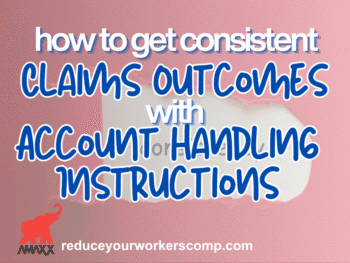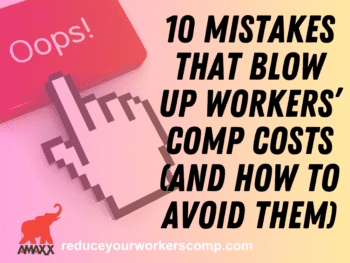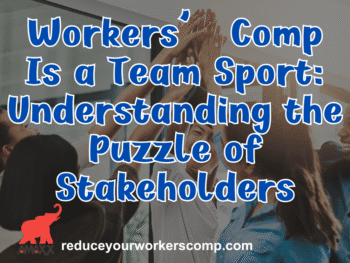Why Begin with the Assessment Workers' compensation is a multi faceted issue. Often there is no "one thing" driving your costs upward, but a confluence of issues, a perfect storm, if you will, resulting in hemorrhaging workers' comp costs. People often don't know what they don't know. Much like going to a doctor's office for a physical, a diagnosis isn't made until all the tests, x-rays and specimens are taken. Then and only then can the physician come up with a complete picture of the patient's health and identify key issues causing distress. A workers' comp assessment does the same thing. One day I sat down and captured the key areas I've seen come into play in virtually every workers' compensation management project. Once you take this assessment, you can see it isn't just one driver sending your costs spiraling, rather it's several factors, acting together, causing costs to spiral. Over the past twenty years, I've identified ten key areas impacting workers' comp costs. My observations are based on hundreds of client projects I've assessed and resolved with succinct recommendations designed to build an action plan. Ten years ago, we conducted client assessments on-site for every site and the mere experience of assessing took over six months to a year. Often the project fixated on the assessment and it became very difficult to move the project into recommendations and implementation. The WorkersCompKit(R) assessment can be completed in an afternoon and yield recommendations immediately to move the project from concept to action. The assessment is not only quick, but also comprehensive — touching on topics raging from management commitment to programmatic aspects such as post injury response, return to work, communication and training. The assessment helps you to identify aspects of issues like claims handling that perhaps you never thought of before. Let's begin with the first 5 of 10 key assessment areas. Assessment Keys 1 to 5 1. Management Commitment The assessment helps you determine the level of management commitment. How involved is your management in day to day operations? How cognizant are they are workers' compensation issues? Are there consequences for divisions having poor performance? 2. Insurance Company and Claims Administration Controls Claims handling can be overwhelming, but if you start with a phone call to your handler, you have taken the first step to gaining control in this area. Make it a point to meet regularly with your claims handler to review open claims, to document activities to date, and to plan strategies going forward. 3. Performance Goals Since workers' comp is measured in dollars and cents, performance goals should be couched in measurable statistical goals, so you can document progress at every step of the way. 4. Post Injury Response It is critical to have a solid post injury response procedure in place so within minutes of a work-related injury occurring, all parties know their roles and responsibilities to resolving the incident. Use the assessment to determine how well you are prepared to respond to injuries. 5. Communication Communication must be intentional not incidental. Use the assessment tie down the lines of communication. Do you have a workers' comp management brochure or a laminated card that employees can put on their lanyards along with their badges. Have you determine how well the communication programs you have in place are working. How to communicate with injured employees. Do you make every effort to stay in touch, keep the lines of communication open. Do you send a get well card, and call them every week? You should make sure all employees know transitional modified duty is expected as part of their recovery process. The assessment will tell you how far in line your practices are and identify specific areas where you need to improve. Next: Assessment Keys 6 to 10 Author: Rebecca Shafer, J.D. consults for mid-market and national accounts focusing on project management, risk management assessments, data review, benchmarking, and development of Workers' Compensation and Injury Management Programs. Projects focus on development of training and education programs, document design, evaluation and integration of insurance claims administration and TPA services. Contact her are: RShaferB@ReduceYourWorkersComp.com We are accepting short articles* (300-800 words). Contact us at: Info@WorkersCompKit.com.
Assess Five Key Issues In Your Workers Compensation Program for Cost Reduction
Try Our FREE WC IQ Test: http://www.workerscompkit.com/intro/ WCBooks: http://www.reduceyourworkerscomp.com/workers-comp-books-manuals.php WC Calculator: www.reduceyourworkerscomp.com/calculator.php
NEW ARTICLE: Return to Work in Unionized Companies http://reduceyourworkerscomp.com//Return-to-Work-Programs-Unionized-Companies.php
Do not use this information without independent verification. All state laws vary. You should consult with your insurance broker or agent about workman’s comp issues.
©2009 Amaxx Risk Solutions, Inc. All rights reserved under International Copyright Law. If you would like permission to reprint this material, contact Info@WorkersCompKit.com














